New stadiums: Football at Yale, Harvard and Princeton
source: StadiumDB.com; author: michał
 Three new stadia added last night represent some of the best universities in the world: Yale, Harvard and Princeton. Members of the Ivy League have quite some stadium history too!
Three new stadia added last night represent some of the best universities in the world: Yale, Harvard and Princeton. Members of the Ivy League have quite some stadium history too!
Advertisement
Yale Bowl, New Haven (61,446)
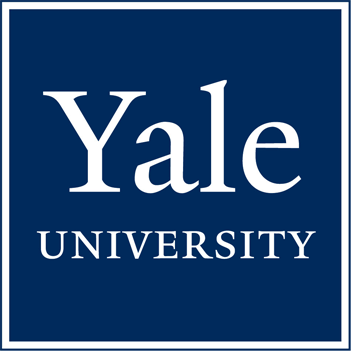 It’s the first American stadium built within a partly sunken bowl. Its simple and cost-effective structure made it first of many similar structures across the USA. Its name also helped popularize the name ‘bowl’ for many famous games, including the Super Bowl.
It’s the first American stadium built within a partly sunken bowl. Its simple and cost-effective structure made it first of many similar structures across the USA. Its name also helped popularize the name ‘bowl’ for many famous games, including the Super Bowl.
It took just over one year to deliver the stadium. Land excavated from the central section of the building was then distributed to create the surrounding landfill stands. They were surrounded by stone walls and facilities, all in the neo-gothic style.
Due to its relevance to American football it was listed as a National Historic Landmark in 1987 and only had minor renovations since then. The Yale University Bulldogs have been playing here for over a century now. In soccer terms it’s not equally important, but the stadium played host to NASL team Connecticut Bicentennials for two seasons. It also was a candidate for holding the 1994 World Cup, but didn’t make the shortlist.
Harvard Stadium, Boston (30,323)
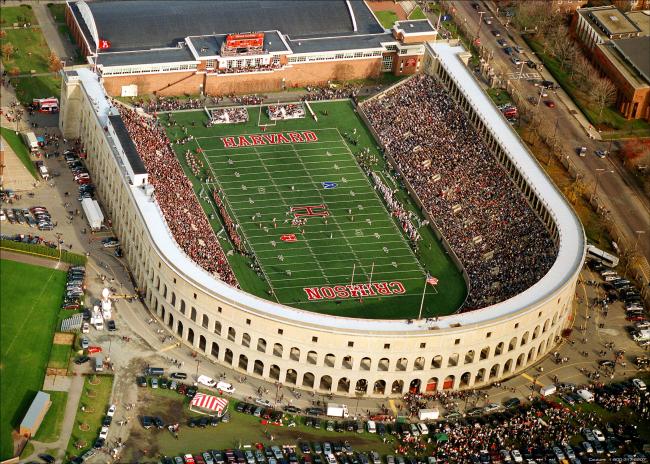 © Harvard Sports Information Dept.
© Harvard Sports Information Dept.
 Built in just 4.5 months (!), this Boston-based stadium was the first academic stadium in the USA. Having been built shortly after the first modern Olympics (1896), the building was largely inspired by the Greek Panathinaiko Stadium and also by Roman amphitheaters.
Built in just 4.5 months (!), this Boston-based stadium was the first academic stadium in the USA. Having been built shortly after the first modern Olympics (1896), the building was largely inspired by the Greek Panathinaiko Stadium and also by Roman amphitheaters.
What’s not visually striking is the stadium’s reinforced concrete structure. It was here that vertical reinforced concrete elements were used, previously only known from horizontal use. Its engineering and architectural significance, aided by how little the building had changed over the years, earned it a National Historic Landmark status in 1987.
Built in a horseshoe shape the stadium witnessed several different attempts to fill the empty northern end. In the first years trapezoidal wooden stands were erected, later torn down. In 1929 new steel stands were built, matching those already standing in terms of height. This is when the stadium reached the capacity peak of over 57,000 people. However, there wasn’t sufficient demand and the steel structure began deteriorating, resulting in its demolition in 1951. Then again smaller trapezoidal stands were erected, this time ending life by 1998, when the Murr Center indoor hall was built.
Alterations done to the initial stadium were very small. Even floodlight installation in 2006 went fairly unnoticed visually as lights were spread atop existing walls. Also in 2006 the ivy covering external walls was permanently removed. Changes to the field were greater as the previous running track was removed in 1980s.
Sporting use of the stadium was primarily provided by the Harvard University Crimson American football section. The team played nearly 1,000 games there since 1903. While not many, there were also some association football (soccer) games played here, most notably 6 group fixtures of the 1984 Olympics, each with an average crowd of 22,000.
Aside of sports the stadium played host to a variety of festivals and concerts (to name just Bob Marley and Janis Joplin). It was also partly converted into a Greek amphitheater in 1905.
Princeton Stadium, Princeton (27,773)
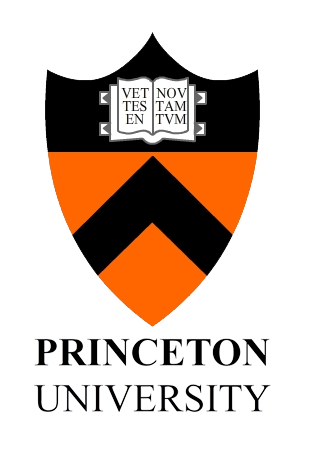 After 82 years in the historic Palmer Stadium, authorities of Palmer University commissioned a brand new venue for American football and other events. It was to respect the heritage of its legendary predecessor, but give it a modern appearance and infrastructure as well.
After 82 years in the historic Palmer Stadium, authorities of Palmer University commissioned a brand new venue for American football and other events. It was to respect the heritage of its legendary predecessor, but give it a modern appearance and infrastructure as well.
The concept by Rafael Viñoly Architects attempted to respect these wishes by enclosing the stadium in a horseshoe-shaped wall. Built with 3,500 concrete prefabs it’s the most distinctive element of the stadium. That outer structure mimics Palmer Stadium’s shape, but also comprises toilets, concession stands and other facilities, like the media and corporate boxes atop the main stand. A rock climbing wall was even created within the wall in 2008.
Despite the horseshoe shape, inside all the stands are rectangular: the lower tier is a continuous ring, while the upper has three separate sections on the west, north and east. The south side was left partly open, because there the main stadium interconnects with the secondary athletic stadium. This way track and field disciplines are still accommodated within the complex, but not at the main stadium, when good sightlines for football and soccer came first. New seats are as little as 5 meters (17 feet) away from the field, representing a very compact size.
Advertisement
 StadiumDB
StadiumDB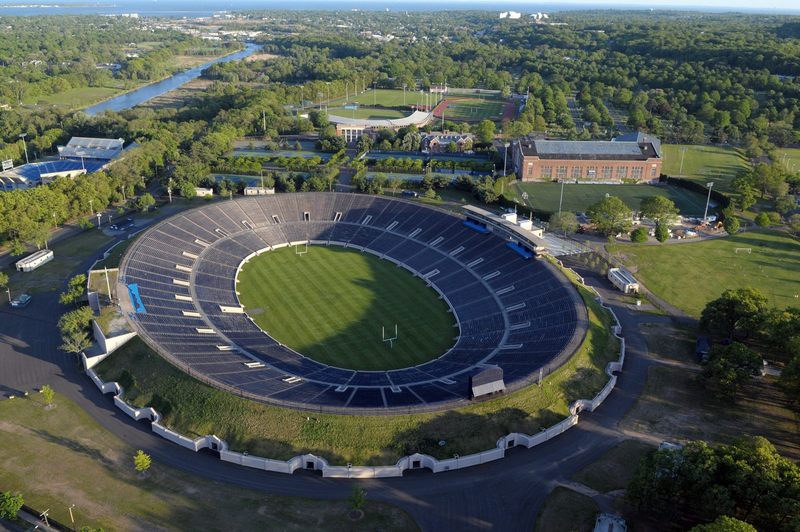 ©
© 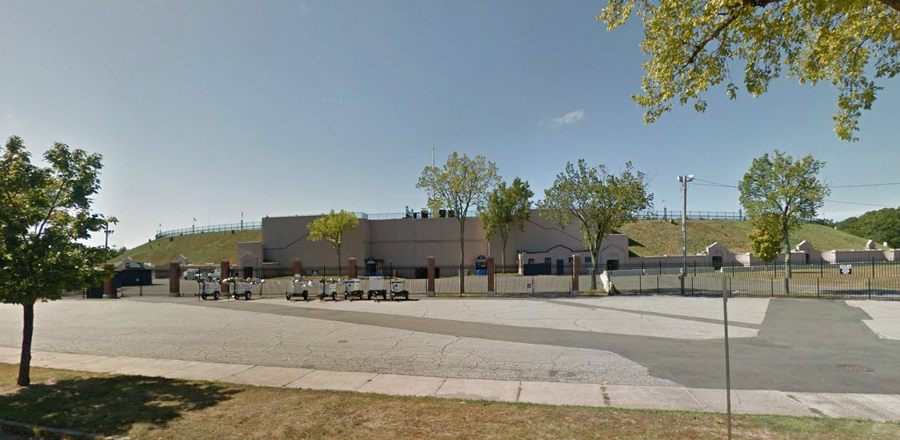 ©
© 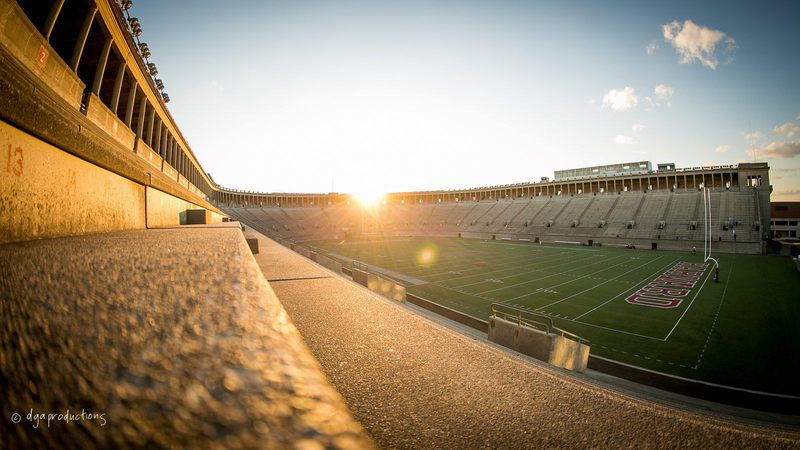 ©
© 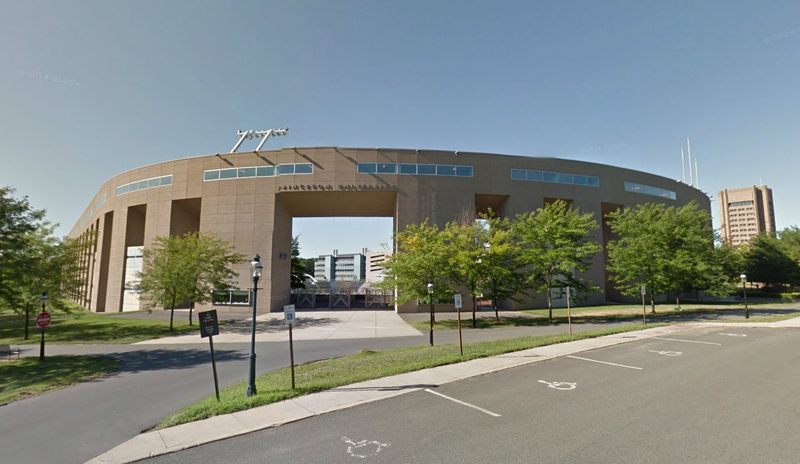 ©
© 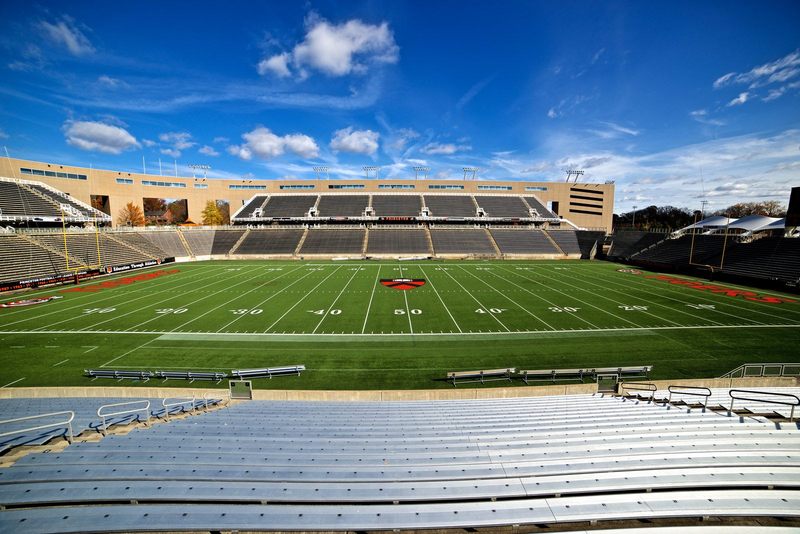 ©
©